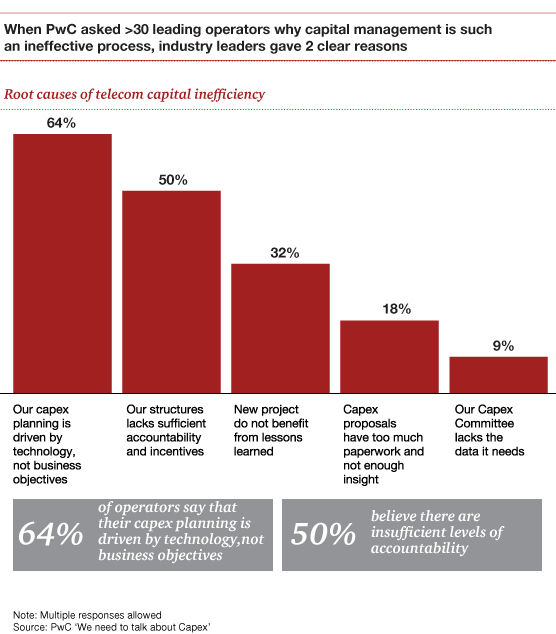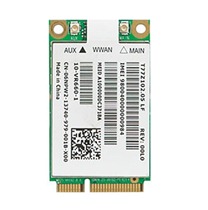The telecommunication industry is going through a transformational phase of development – to acclimatize itself per the new technological and cloud trends. An article I had written for Microsoft blog discusses this in good detail – Digital transformation helps telcos move from perish to flourish.
At the very outset, the focus was on the Communication Technology (CT) which marked the first wave of the information era. The second phase was the internet phase which started approximately around the year 2000. The industry realigned itself around horizontal solutions during this phase. It was the time of e-commerce and portals.
After 2006, the cloud began taking shape and this marked the third phase of transformation in the telecommunication industry. Come 2019 and we are in the midst of the era of cloud, where a new world of opportunities has opened up for the carriers. It is quite evident that this era is unstoppable and there is no escape.

Ever since BT was privatised in 1984, there has been a continuous policy debate over how the UK telecommunications sector should be regulated to adapt to rapidly changing technologies and markets. The world has of course come a long way since then with mobile, internet and broadband to name but a few of the main developments. UK consumers are benefiting from faster fixed and mobile networks. By June 2016, 44% of all fixed broadband connections were able to receive actual download speeds of 30Mbit/s or more, up from 38% a year previously. Nearly two-thirds of mobile subscriptions were enabled for 4G, up from 46% in 2015.
British Telecom Network & Wireless Cards Drivers
Related: MSP and CSP Best Practices Guide – How to Grow your Profitable Cloud Business in 2020
- In 2017, newly published Land Registry data revealed 4 million km of networks and telecommunications lines underneath London, many of which were secretly constructed by the Post Office, British.
- British Telecommunications Group plc has been the largest and oldest telecommunication service provider in the UK. The company started with landline and broadband services, gradually entered the mobile market and then expanded its horizon to television services.
In addition to opportunities, the telecom companies around the world are facing a lot of challenges in this era. New technologies like the Internet of Things (IoT), augmented reality (AR), virtual reality (VR), microservices and more necessitate that telecom providers realign their business strategies and restructure themselves as per the cloud era, in terms of operations, architecture and networks as well.
Moreover, in order to gain a competitive edge, they need to focus on providing customized solutions to their customers and focus on developing long-term relationships with them.

Top 5 challenges and trends in telecommunication industry
This write-up on top 5 challenges and trends in telecom industry is an endeavour to help you stay informed. Let’s discuss the challenges faced by the telecom industry first.
Top challenges in telecommunication industry

Telcos have to decentralize the purchasing and decision power, both internally and externally, because of the essential agile reconfiguration of the cloud.
With the availability of new technologies, the variety and quality of services from telecom companies and internet service providers (ISP) are increasing, profit margins are decreasing, and the lines between telecom companies and technology vendors are blurring. Hence, telcos have to take a fresh look at the level of ICT innovation and adapt their organization to digital transformation by creating strong cross-functional interfaces and by seeking tools for maintaining organizational flexibility.
With millions of subscribers, a variety of new products, bundled and customized solutions, the operational support services like service configuration, order fulfillment, customer care, and billing are becoming increasingly complex. Hence, the cost of handling these operations require resources and different tools, thus, increasing the financial overhead.
Telecommunication providers need to upgrade their IT and connectivity infrastructure and focus on providing data and voice services that are high quality, reliable, and affordable. Security of the networks has become a major priority for the telcos and they are facing challenges with the emergence of new threats that are powered by new technologies. So, a number of operational and technical innovations are needed to meet customer expectations of complete system security from network till the device level.
One more challenge waiting in the wings for telcos and ISPs is the impact of Internet of Things (IoT) that is leading to explosive growth in the connected devices. This growth is generating billions and trillions of new data sources and thus, it is expected that this growth will push the data to be handled by networks to zettabytes per year.
Top trends in the telecommunication industry
- 5G Networks – The telecom carriers are working on providing the 5G networks to spark an enormous wave of faster internet. While the technology has not yet been fully defined, carriers are proceeding with the lab and field trials in their race to stay competitive.
The full, mass-market 5G coverage is expected by approximately 2020.
- Secure and reliable services – Modern telecom environment offers a rich set of services that need reliable and secure authentication. The number of smartphones equipped with biometric fingerprint readers is increasing. This technology is also being used by retailers, financial institutions, government, and even schools, to verify identities.
Other biometric mechanisms like facial or retinal recognition, are also telecom trends and are likely to pick up steam in the coming years. An increasingly large number of telecom companies are adopting biometric SIM cards for curbing crimes related to mobile phones and terrorist attacks as well.
- Artificial Intelligence (AI) – The addition of artificial intelligence (AI) capabilities to smartphones will bring the next shift in technology, according to Huawei, in an article by ZDNet.
AI allows smartphones to perform highly sophisticated functions such as augmented reality (remember Pokémon Go), speech recognition, indoor navigation, and even learning the daily tasks and preferences of an individual to enable digital assistants like Siri and Alexa.
Customer service chatbots, like CenturyLink’s ‘sales assistant’, speech and voice services for customers where they can explore or buy content by speaking, traffic classification, network optimization and orchestration, and predictive network maintenance, like AT&T’s self-healing and self-learning hardware that’s powered by artificial intelligence are among some AI applications that are used by the leading players and are among the emerging trends in the telecommunication sector.
- Internet of Things – Although mentioned above as part of challenges faced by telecom industry due to the huge amount of data that connected devices generate, but this is one major trend that will provide telcos with more opportunities in the coming years. Becoming an IoT connectivity service provider and offering Machine to Machine (M2M) devices can open up new streams of revenue for the telcos.
Gartner predicts that there will be nearly 20 billion devices connected to the IoT by 2020 and that IoT product and service suppliers will amount to a business of $300 billion in revenue.
As per a survey by Tata Consultancy Services (TCS), the telecom sector ranks fourth as far as spending on IoT technology is concerned. Making software-based updates to their products and services has been rated as the top business process improvement by telecom companies. Other business improvements are providing customized marketing campaigns, improving customer segmentation, and providing better service.Image Credit: Tata Consultancy Services
IoT can be used for improving the operational efficiency with remote monitoring and management of equipment, IT infrastructure, getting better security with IoT enabled intrusion detection system and protection of remote sites by the telcos.
- Mergers & Acquisitions – With cut-throat competition, new technological innovations disrupting the existing customer base, the year doesn’t seem to be very easy for the telecommunication sector. That’s why a number of companies are looking to partner with media and content firms, like AT&T’s proposed merger with Times Time Warner Inc.
In addition, telcos are looking to increase their offerings by partnering with OTT players for delivering content or companies that can help them provide enterprise solutions like
SD-WAN (software-defined WAN).
The telecom companies should take a more informed approach to simplification of business processes which can help them ride the digital transformation wave.
The cloud and subscription billing complexities can be simplified with the right tools. Designed to ease management of recurring revenue businesses, RackNapempowers you to manage your business processes – billing, inventory, service delivery, marketing, sales, customer support and more through AUTOMATION- all from a single pane of glass.
British Telecom Network & Wireless Cards Drivers
What will be the top telecommunication industry trends in 2019 and beyond, per you? Let us know if there are any other telecommunication trends or challenges in the telecom industry that we should include in this article.

